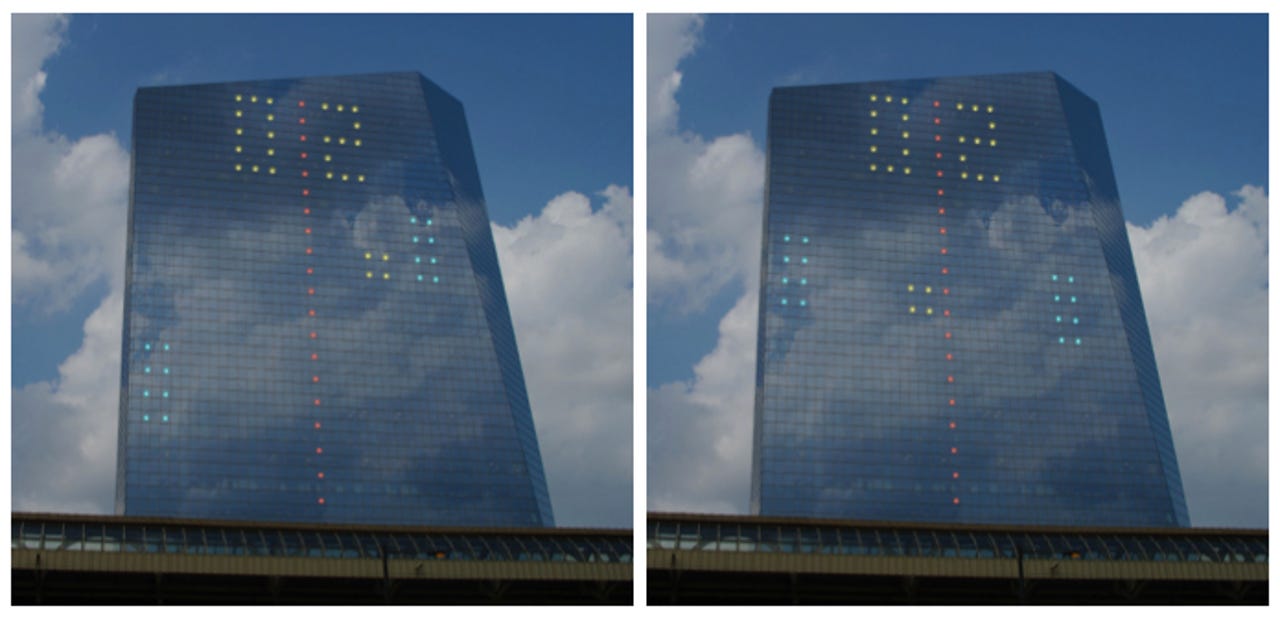World's largest video game will be played on a U.S. skyscraper


I'm not going to try to convince you that this post has anything to do with enterprise technology.
But it's too geeky-cool not to write about.
Drexel University professor Frank Lee has commandeered the lighting system for the Cira Centre, a prominent 437-ft. tall glass shard overlooking Amtrak's 30th St. Station in the U.S. city of Philadelphia, to play Pong. And Snake. (At least, a version of it.)
He made the announcement last night during a preview event for Philly Tech Week, to be held later this month for the third year running.
Apparently, all of the LED lights on the 29-story building have IP addresses. Normally, they're used to display graphic treats and, on game days, the logo of the city's professional baseball team, the Phillies. (The eight-year-old building is easily visible from the city's central business district and from major roadways that flow into it.)
Lee, looking at the building one night a few years ago, thought to himself: what if I could turn those lights into an interactive game that people could play? (He is, after all, the co-founder and co-director of the Game Design Program at Drexel.)
And so he asked. And the building's owner, Brandywine Realty Trust, answered in the affirmative.
An excerpt from his proposal:
We determined that the lighting system can be adapted to become an interactive system in which the lights can change in real-time in response to outside input, e.g. button press, joystick movement, or keystroke. This allows us for example to potentially create games like Pong and Tetris, to be played on one or more sides of the Cira Centre building using its LED lighting system.
The idea? To turn the novelty into an annual event -- the "World's Biggest Video Game Contest" -- and give regular people oversized joysticks to play against each other. It's a massive, interactive public art display, based on technology many people grew up with, on the side of a decidedly corporate structure.
How's that for big data? Gamification? Cloud computing? (Har, har.)
Lee was visibly excited describing it to us last night, and it's easy to see why. He'll be inviting the public to play his game after sundown later this month.